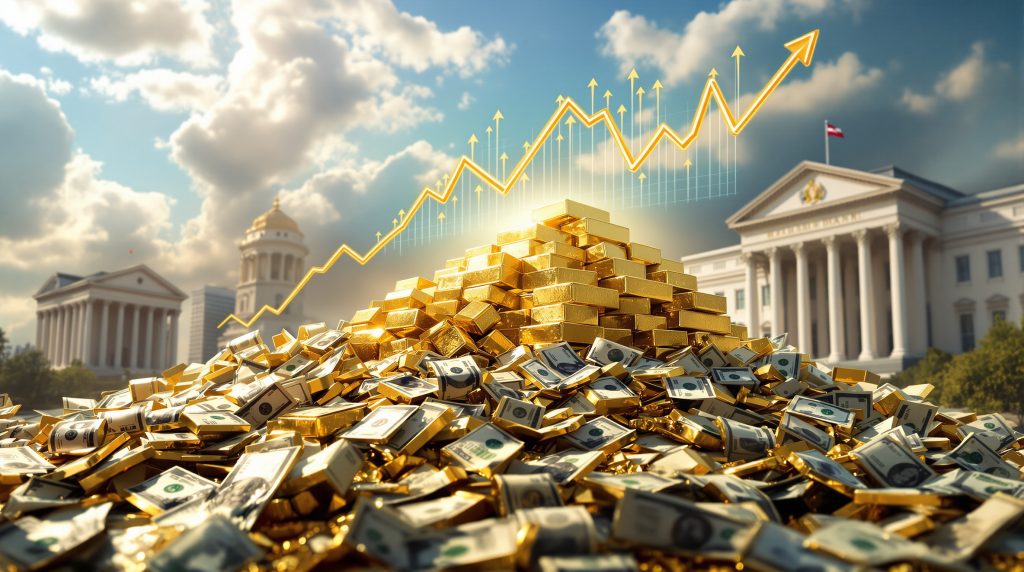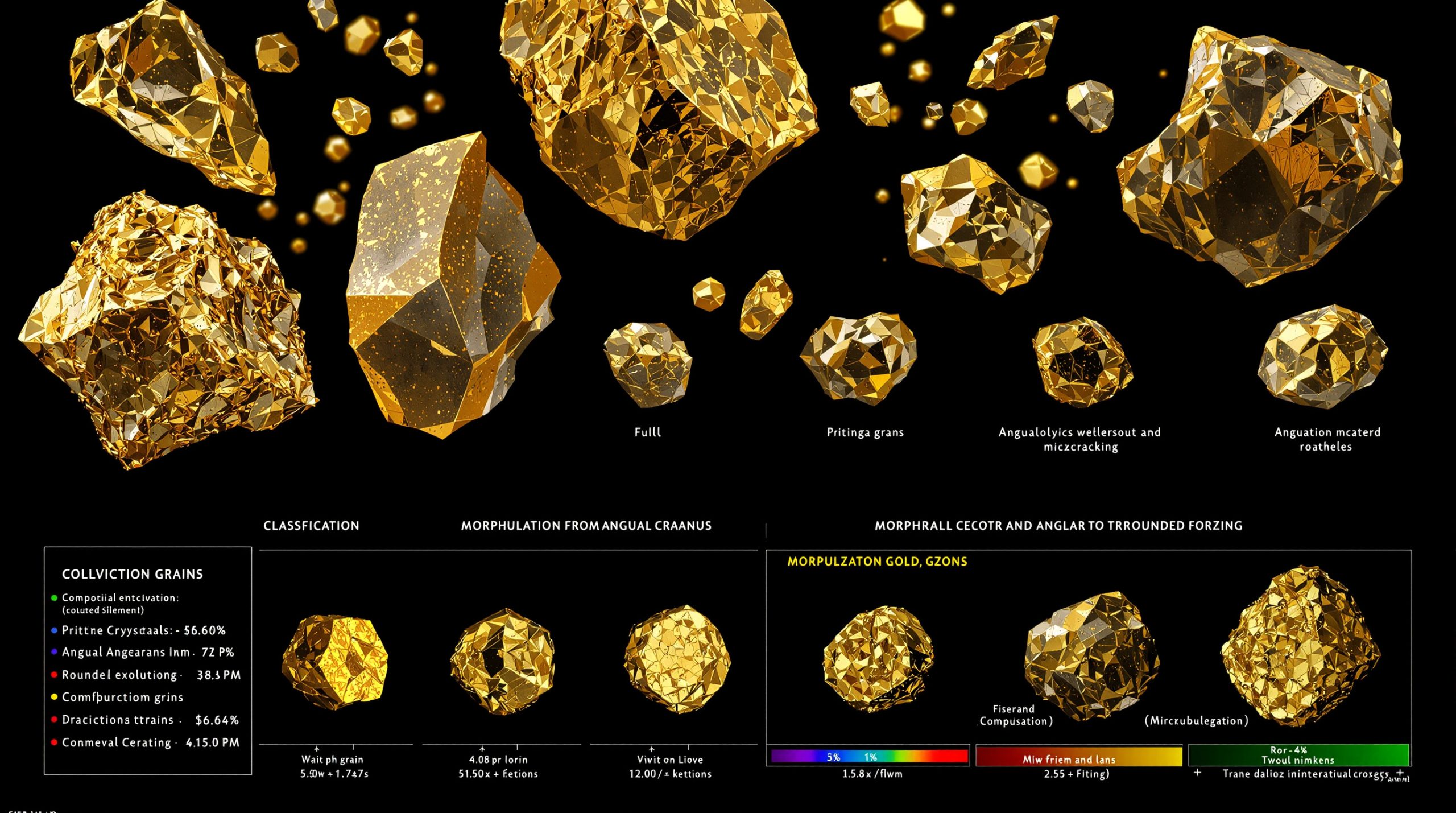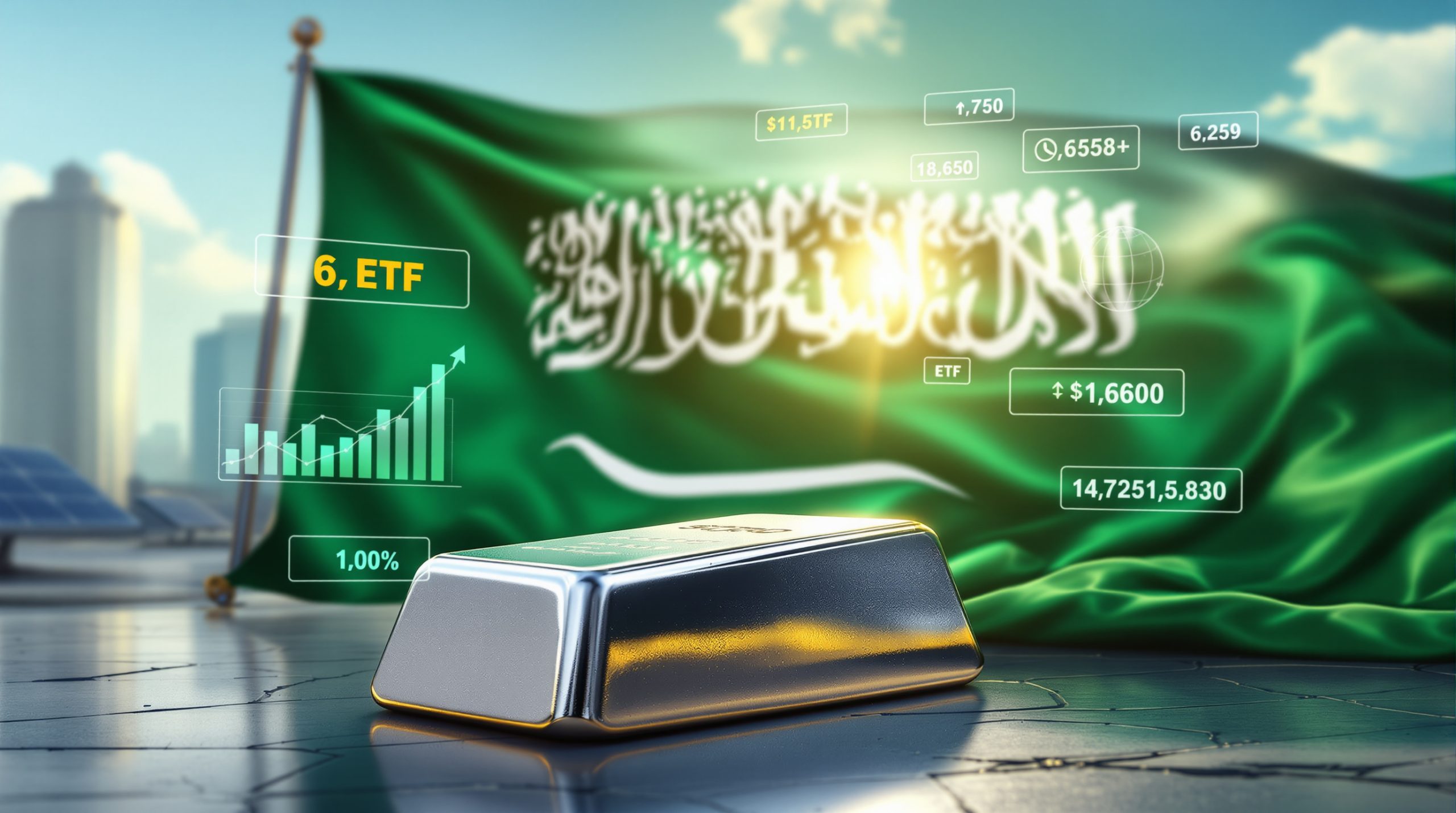How Is Gold and Silver Signaling a Major Economic Transformation?
The recent remarkable price surge in gold and silver signals a significant economic transformation underway. Gold reached an all-time high of $2,790.15 per troy ounce in late 2024, representing approximately 40% growth over a two-year period. Similarly, silver has climbed from around $19 to the $31-34 range during the same timeframe—a 60-70% increase that has caught the attention of both institutional and individual investors.
This precious metals rally isn't merely a market fluctuation but potentially indicates a fundamental shift in how wealth is preserved and transferred in our increasingly uncertain financial landscape.
Key Indicators of the Precious Metals Surge
Central bank gold purchasing has reached historic levels, with 1,037 tonnes acquired in 2023—the second-highest year on record after 2022's 1,082 tonnes. This represents a staggering 183% increase compared to the 2010-2021 average of 367 tonnes annually according to the World Gold Council.
The first half of 2024 maintained this robust trend, with central banks adding nearly 473 tonnes to their reserves, signaling continued institutional confidence in gold as a strategic asset.
This unprecedented central bank buying occurs against a backdrop of declining confidence in traditional paper-based financial instruments and growing concerns about currency devaluation.
The SWIFT network reports that the US dollar's share of global payment transactions has declined to 47.7% (as of August 2024), down from approximately 52% in 2020—a statistic that quietly underscores changing attitudes toward the world's reserve currency.
Physical gold and silver offer distinct advantages in this environment. The London Bullion Market Association reports daily trading volumes of approximately 20 million ounces of gold, while global annual mine production is only about 110 million ounces. This disparity between paper trading and physical supply highlights the leveraged nature of precious metals markets and the premium potential of physical ownership.
Why Are National Debt Levels Creating a Perfect Storm for Wealth Transfer?
The United States faces unprecedented debt challenges that are fundamentally altering the economic landscape and driving wealth toward tangible assets. As national debt levels reach historic proportions, the mechanics of debt servicing create a perfect storm for a wealth transfer from paper assets to gold and silver.
The True Scale of National Debt
US national debt stands at approximately $35.7 trillion as of October 2025, according to the U.S. Department of Treasury. This translates to roughly $250,000 per American taxpayer—a burden that continues to grow with each passing month.
The federal debt-to-GDP ratio has reached approximately 123% (considering total public debt including intragovernmental holdings), a level not seen since the immediate aftermath of World War II. The Congressional Budget Office has described this trajectory as "unsustainable," warning that federal debt is projected to rise from 97% of GDP at the end of 2024 to 116% in 2034—"higher than at any point in the nation's history except for a five-year period around World War II."
Perhaps most concerning is the interest burden this debt creates. Net interest payments on the national debt reached $892 billion in fiscal year 2024, making it the fourth largest federal budget expense. This interest expense now exceeds key budget priorities and is projected to reach a staggering $1.6 trillion by 2034, according to CBO projections.
The Accelerating Debt Cycle
The mechanics of this debt cycle have become increasingly unstable. Foreign holdings of US Treasury securities have decreased from $7.73 trillion in December 2021 to approximately $7.25 trillion in June 2024, indicating declining global demand for US debt.
This declining demand forces higher interest rates to attract buyers, which in turn increases debt servicing costs. Higher servicing costs lead to greater deficit spending, which necessitates more debt issuance. More debt with less demand creates a dangerous feedback loop that threatens to accelerate dramatically in coming years.
Unlike previous debt cycles where low interest rates and strong foreign demand provided a buffer, today's environment features rising rates and waning international appetite for US debt instruments—creating unique conditions for a wealth transfer toward hard assets like gold and silver.
What Makes This Economic Moment Different from Previous Cycles?
Current economic conditions differ significantly from previous debt cycles, creating unique pressures that are driving the wealth transfer toward precious metals.
The Eroding Global Reserve Currency Status
The International Monetary Fund reports that the US dollar's share of global foreign exchange reserves has declined from 71% in 1999 to 58.4% in the first quarter of 2024. This gradual erosion of dollar dominance represents a structural shift in global finance rather than a temporary fluctuation.
Major holders of US Treasury securities are quietly reducing their exposure. China has decreased its holdings from a peak of $1.07 trillion in 2013 to $775 billion as of mid-2024—a 27% reduction. Even Japan, historically the largest holder of US debt, has reduced its position from $1.32 trillion to $1.13 trillion over a similar period.
The IMF has noted this trend, stating that "The US dollar remains dominant but its role is declining gradually. The shift is happening in favor of non-traditional reserve currencies including the Chinese renminbi and currencies of smaller countries."
The Widening Prosperity Gap
The gap between asset inflation and wage growth creates another unique pressure point in this economic cycle. According to Kelley Blue Book, the average new vehicle transaction price was $48,623 in September 2024, compared to approximately $21,850 in 2000—a 122% increase.
Housing costs have risen even more dramatically, with the median existing home sale price reaching $404,500 in September 2024 according to the National Association of Realtors, up from $139,000 in 2000—representing a 191% increase.
During this same period, median household income has only increased from $42,148 to $80,610—a 91% gain that, while significant, has failed to keep pace with the rising cost of major purchases. This widening prosperity gap drives individuals to seek alternative stores of value that can preserve purchasing power more effectively than traditional savings vehicles.
These structural changes in the global monetary system and domestic purchasing power dynamics create conditions unlike previous economic cycles, suggesting that traditional paper assets may face unprecedented challenges in coming years.
How Are Central Banks Signaling the Future of Monetary Systems?
Central bank behavior provides perhaps the clearest indicator of the coming wealth transfer, as these institutions position themselves for a new monetary reality.
Record Central Bank Gold Acquisition
The scale of central bank precious metals acquisition tells a compelling story. The World Gold Council documents that 2022 and 2023 were the two highest years on record for central bank gold purchases, with 1,082 tonnes and 1,037 tonnes respectively. This purchasing trend has continued through 2024, with central banks adding 473 tonnes in just the first half of the year.
The list of major buyers reveals a global phenomenon:
- People's Bank of China: 225 tonnes (2023)
- National Bank of Poland: 130 tonnes (2023)
- Central Bank of Turkey: 98 tonnes (2023)
- Reserve Bank of India: 16 tonnes (2023)
- Central Bank of Jordan: 15 tonnes (2023)
According to the World Gold Council's 2024 Central Bank Gold Reserves Survey, these institutions cite specific strategic reasons for their gold price analysis acquisitions: "long-term store of value" (81% of respondents), "effective portfolio diversifier" (79%), "performance during times of crisis" (62%), and "lack of default risk" (56%).
This consistent pattern of gold accumulation by central banks represents a strategic positioning ahead of potential monetary system restructuring.
Financial System Stress Indicators
The Bank for International Settlements reports the notional amount outstanding of over-the-counter derivatives was $714 trillion as of December 2023, with foreign exchange derivatives specifically totaling $110 trillion notional. These massive figures represent interconnected financial commitments that create systemic vulnerabilities.
Other financial stress indicators include declining bond market liquidity, increased sovereign debt downgrades, and a growing divergence between paper and physical precious metals prices. Many institutional investors have noted rising premiums on physical metals over spot prices—a sign of increasing demand for tangible assets over paper claims.
As monetary policy responses struggle to normalize, central banks find themselves in a challenging position: unable to raise rates enough to combat inflation without triggering debt crises, yet equally unable to return to zero-interest policies without risking currency stability.
What Historical Patterns Support the Case for Precious Metals?
Historical monetary trends provide context for understanding the current wealth transfer dynamics and why precious metals consistently emerge as wealth preservation vehicles during monetary transitions.
The Evolution of Money Supply and Precious Metals
The relationship between precious metals and currency has transformed dramatically over the past century:
-
Gold in 1913: $20.67 per ounce (fixed price under Gold Standard Act)
-
Gold in October 2024: approximately $2,740 per ounce
-
Silver in 1913: approximately $0.60 per ounce
-
Silver in October 2024: approximately $34 per ounce
Meanwhile, the M2 money supply has expanded from approximately $16.4 billion in 1913 to $21.2 trillion in September 2024—a staggering 129,168% increase over 111 years.
This dramatic expansion of money supply relative to the finite supply of precious metals illustrates why gold and silver have historically served as hedges against monetary devaluation.
Lessons from Previous Monetary Transitions
The United States operated under various gold standard systems for most of its history:
- Gold Standard Act of 1900: Fixed gold at $20.67 per ounce
- 1933: Gold Reserve Act raised price to $35 per ounce
- 1971: Nixon ended gold convertibility (Bretton Woods collapse)
Each transition in the monetary system created winners and losers. Those positioned in tangible assets historically fared better during these transitions than those holding only paper claims.
The U.S. Geological Survey estimates that approximately 208,874 tonnes of gold have been mined through 2023, with about 54% of this total extracted since 1950. This relatively stable supply growth contrasts sharply with exponential fiat currency creation.
Historical evidence consistently shows that all empires, currencies, and monetary systems eventually undergo transformation. Warning signs typically appear before major systemic changes, but the process often unfolds gradually, then suddenly accelerates—catching unprepared investors by surprise.
What Unique Advantages Do Gold and Silver Offer During Economic Uncertainty?
Gold and silver provide specific benefits that make them particularly valuable during periods of economic transformation and uncertainty.
Physical Ownership Benefits
Physical gold and silver offer distinct advantages that paper investments cannot match:
Gold's physical properties make it ideally suited as a monetary metal. With a density of 19.3 g/cm³, gold is difficult to counterfeit. It remains inert, neither corroding nor tarnishing over time. It can be divided and reformed without losing value, and its high value-to-weight ratio makes it portable across borders.
Perhaps most importantly, physical metals eliminate counterparty risk—defined by the Bank for International Settlements as "the risk that a counterparty to a transaction will default prior to final settlement of the transaction's cash flows." Unlike paper assets that represent claims against third parties, physical gold and silver represent direct ownership not subject to institutional failure.
During periods of financial stress, this absence of counterparty risk becomes particularly valuable, as even seemingly secure paper claims can be compromised by institutional instability.
Wealth Preservation Characteristics
Research by economists Claude B. Erb and Campbell Harvey found that gold has maintained its purchasing power over centuries. Their analysis showed that gold's real price (inflation-adjusted) has remained relatively stable over the long term, demonstrating its wealth preservation characteristics.
Historical case studies from Weimar Germany, Zimbabwe, Venezuela, and other hyperinflationary environments consistently show that physical precious metals maintained purchasing power while paper currencies collapsed. This makes gold and silver natural hedges against currency devaluation.
The portable nature of precious metals allows wealth to cross borders independent of banking systems or digital infrastructure—a critical advantage during periods of capital controls or financial system disruption.
Unlike digital assets that require technological infrastructure to access, physical gold and silver remain accessible and fungible under virtually any conditions, recognized universally without requiring institutional validation.
How Can Investors Navigate the Wealth Transfer Strategically?
Strategic positioning is essential for those looking to protect their assets during this wealth transfer period. A thoughtful approach to precious metals acquisition can significantly impact long-term financial outcomes.
Developing a Customized Precious Metals Strategy
The World Gold Council suggests a 2-10% gold allocation for portfolio diversification, though individual circumstances may warrant adjustments to this range based on specific risk factors and financial goals.
Research analyzing data from 1971-2019 found that portfolios with modest gold allocations improved risk-adjusted returns across various market conditions, demonstrating gold's role as a non-correlated asset within a broader investment strategies.
When developing a precious metals strategy, investors should consider:
- Financial circumstances: Current debt levels, income stability, and existing asset allocations
- Timeline considerations: Short-term liquidity needs versus long-term wealth preservation
- Risk exposure: Vulnerability to currency devaluation, market volatility, and systemic risk
- Product selection: Coins vs. bars, sovereign vs. private mint, gold-silver ratio insights
- Storage solutions: Home storage, private vaulting, or qualified custodians
A structured acquisition plan might include dollar-cost averaging into physical metals over time rather than attempting to time market bottoms, especially given the volatility in precious metals markets.
Common Implementation Mistakes to Avoid
Many investors make preventable errors when implementing their precious metals strategy:
- Timing paralysis: Waiting for "perfect" entry points rather than establishing strategic positions
- Product misalignment: Selecting inappropriate products (rare collectibles instead of bullion for wealth preservation)
- Over-concentration: Excessive allocation to a single metal or product type
- Storage oversights: Inadequate security or insurance for home-stored metals
- Liquidity imbalance: Insufficient cash reserves alongside physical metals
Balancing these considerations requires a personalized approach that acknowledges both the benefits and limitations of physical precious metals ownership within a broader financial strategy.
What Warning Signs Indicate the Wealth Transfer Is Accelerating?
Several key indicators suggest the wealth transfer from paper assets to precious metals is gaining momentum, providing observable metrics for those monitoring this economic shift.
Financial System Stress Indicators
Declining bond market liquidity presents a concerning trend, with Federal Reserve data showing deteriorating trading conditions in Treasury markets despite their theoretical status as the world's most liquid securities.
The divergence between paper and physical precious metals prices has become more pronounced, with premiums on physical metals over spot prices reaching elevated levels compared to historical averages.
The Society for Worldwide Interbank Financial Telecommunication (SWIFT) reports the US dollar's declining share of global payment transactions—down to 47.7% as of August 2024 from approximately 52% in 2020—representing a structural shift in international commerce.
Monetary Policy Responses
Central banks globally are struggling to normalize interest rates, caught between inflationary pressures and debt sustainability concerns. Despite multiple attempts to reduce balance sheets, many central banks have resumed expansionary policies when markets showed signs of stress.
Increasing government intervention in markets has become necessary to maintain stability, raising questions about true price discovery in many asset classes, including precious metals.
Discussions about central bank digital currencies (CBDCs) have accelerated, with numerous pilot programs underway worldwide. These developments suggest preparations for significant changes to the international monetary architecture.
FAQs About the Wealth Transfer to Precious Metals
What percentage of a portfolio should typically be allocated to precious metals?
The World Gold Council suggests 2-10% gold allocation for portfolio diversification, though this range may shift based on individual circumstances and risk factors. During periods of heightened monetary uncertainty, some investors choose to increase this allocation strategically. The appropriate percentage depends on your risk tolerance, time horizon, and overall financial situation.
How does physical ownership differ from paper gold and silver investments?
Physical ownership provides direct possession of the metals without counterparty risk, while paper investments (ETFs, mining stocks, futures) offer convenience but introduce dependencies on financial institutions and market mechanisms. Physical metals cannot be defaulted on, while paper claims to metals can potentially exceed available supply.
Gold's physical properties—19.3 g/cm³ density, corrosion resistance, divisibility, and high value-to-weight ratio—make it an ideal monetary metal that can be verified, transported, and exchanged without institutional intermediaries.
What are the tax implications of precious metals ownership?
Precious metals may be subject to capital gains taxes when sold at a profit, with rates depending on holding period and jurisdiction. In the United States, physical gold and silver are currently taxed at collectible rates (maximum 28%) rather than standard capital gains rates.
Some jurisdictions apply sales taxes to precious metals transactions, though many states offer exemptions for investment-grade gold and silver. Certain precious metals IRA structures offer tax advantages for qualified retirement funds, though they come with specific requirements regarding product types and storage arrangements.
How does the wealth transfer affect retirement planning?
The wealth transfer may significantly impact traditional retirement vehicles that rely heavily on paper assets. Fixed income investments face particular challenges in inflationary environments, potentially eroding purchasing power of retirement savings.
Diversifying retirement savings to include some allocation to precious metals—whether through qualified accounts or outside traditional retirement structures—can provide a hedge against currency devaluation and market volatility.
Research from the World Gold Council analyzing data from 1971-2019 found that modest gold allocations improved risk-adjusted returns across various market conditions, supporting the case for including precious metals as part of a balanced retirement strategy during periods of monetary uncertainty.
Further Exploration
Investors interested in learning more about the relationship between economic cycles and precious metals can explore historical case studies of previous monetary transitions, including the end of the Bretton Woods system in 1971 and its aftermath.
Analysis of central bank balance sheets provides additional context for understanding institutional positioning ahead of potential monetary restructuring.
Research into physical supply-demand dynamics for precious metals offers insights into future price discovery mechanisms as more investors seek tangible assets during this wealth transfer period from paper assets to gold and silver. Additionally, understanding the impact of the recent silver market squeeze and monitoring the potential for a historic price surge can help investors position themselves advantageously.
Ready to Capitalise on the Next Major Mineral Discovery?
Stay ahead of the market with Discovery Alert's proprietary Discovery IQ model, which delivers instant notifications on significant ASX mineral discoveries and transforms complex data into actionable insights. Understand why historic discoveries can generate substantial returns by visiting Discovery Alert's dedicated discoveries page and begin your 30-day free trial today.




